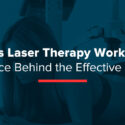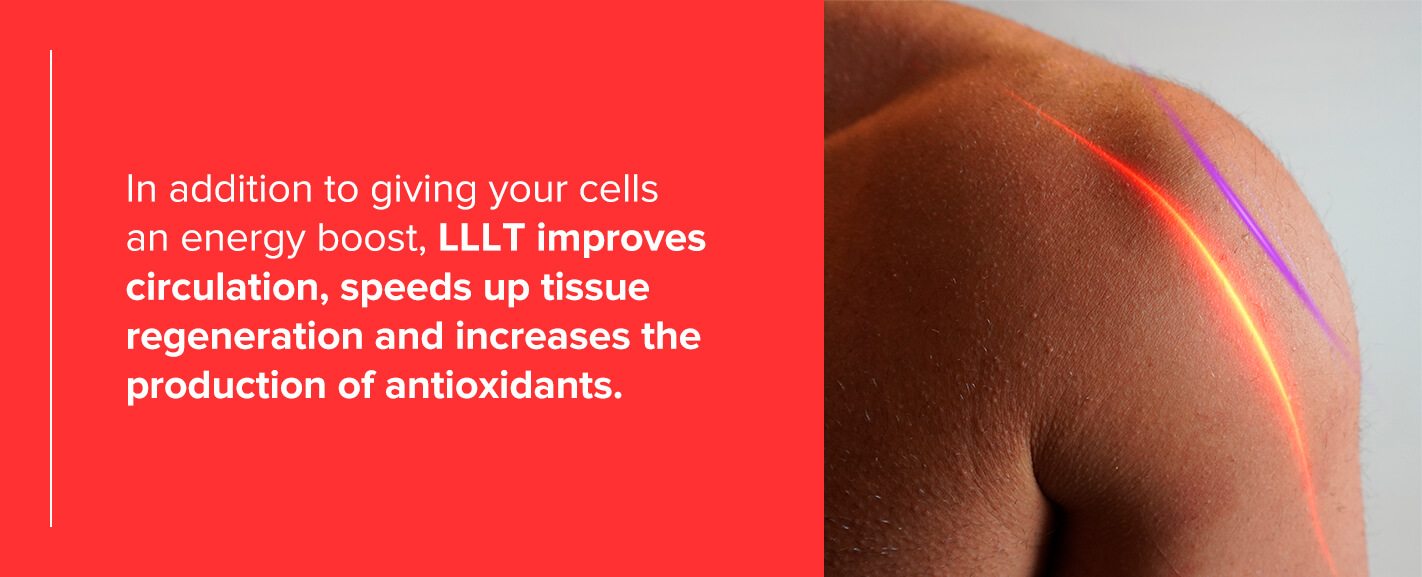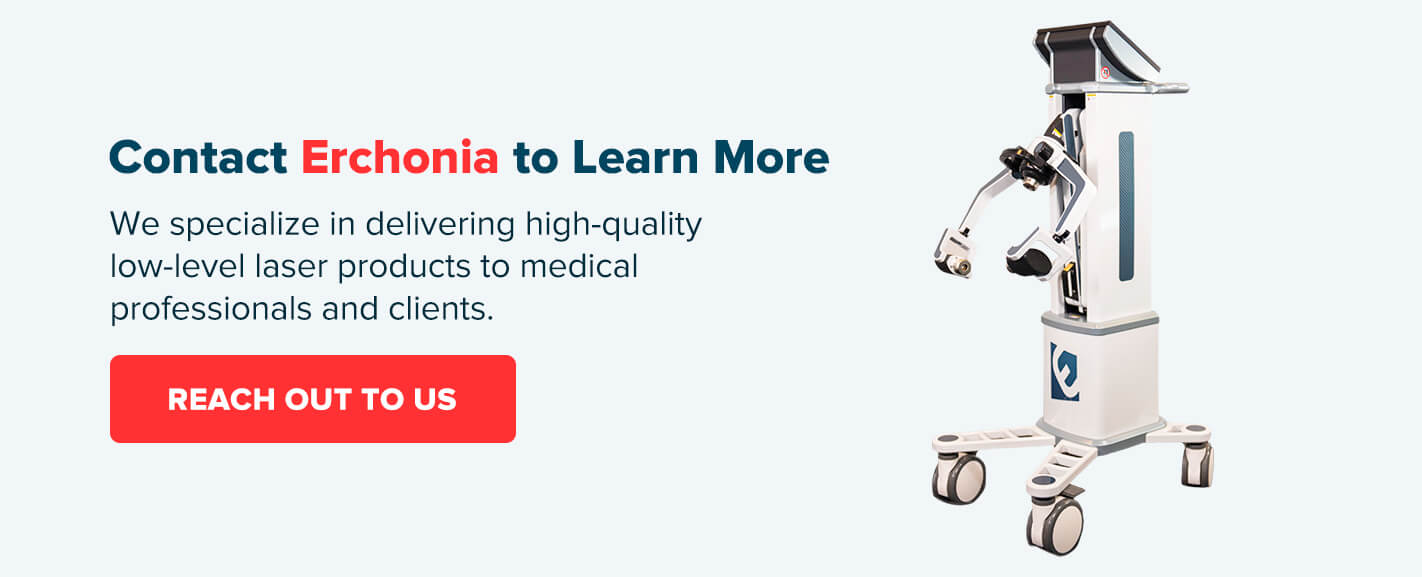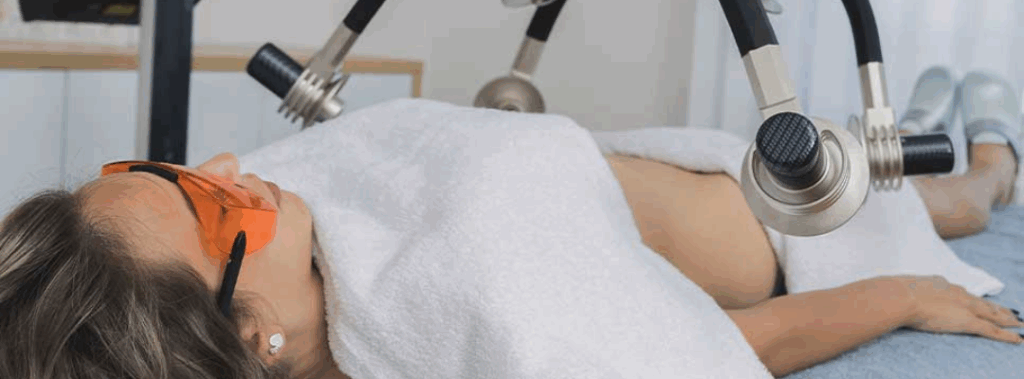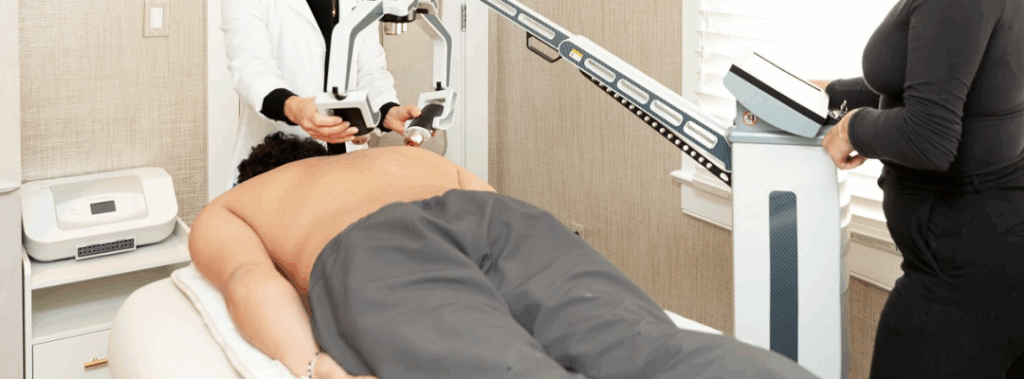
For millions of Americans, pain is a regular part of life. According to a 2016 report, an estimated 50 million American adults suffer from chronic pain. Chronic pain may last for weeks or years and feel like an ache, burn or sting. Pain is one of the primary reasons people go to the doctor, and it links with problems such as anxiety, depression, dependence on opioids and overall reduced quality of life.
Chronic pain can be difficult to treat depending on the cause, and sometimes, there is no known reason for the condition. However, specific treatments, such as laser therapy, can help bring fast relief for common ailments like back pain. Laser therapy is a safe and effective solution to relieving pain and healing the body without invasive surgery or potentially harmful medications. Over 4,000 studies demonstrate the positive effects of laser therapy, and it’s earned approval from the Food and Drug Administration (FDA) to treat a range of conditions. Still, we don’t fully understand the science of laser therapy for pain, and scientists need to conduct more research to outline how it works. In the meantime, we’ll explore what we currently know about laser therapy’s effects and how it might help you enjoy long-lasting relief from acute or chronic pain.
What Is Cold Laser Therapy?
Laser therapy, also called low-level laser therapy (LLLT) or cold laser therapy uses visible light radiation to produce a photochemical reaction within the body’s cells. LLLT does not emit heat and is why you might also hear people call it cold laser therapy. The treatment uses wavelengths within the visible light spectrum that falls between 400 to 760 nanometers (nm). These wavelengths can penetrate the skin and soft or hard tissues and have clinically proven to have a positive benefit on inflammation, pain and healing.
During an LLLT session, a physician will align the laser-emitting device over the painful area. The low-level laser will then penetrate your skin without causing pain or damage. Your cells will absorb the light energy and convert it into cell energy, suppressing pain and reducing the inflammatory pathways. The entire therapy procedure may only take a few minutes, but you might need to return for follow-up treatments a few times a week for a month or so. Published data shows that results have lasted up to a year.
The lasers used in LLLT are not like those used to perform surgeries. Laser surgery devices use around 300 watts and can cut through the skin. Cold laser devices use between five and 500 milliwatts. The FDA considers cold lasers to be non-heating instruments.
Although there is much to learn about how lasers work for pain management, laser devices are nothing new. In 1967, Hungarian surgeon Endre Mester discovered the ability of laser light to stimulate healing in mice. He then used his findings to treat skin ulcers in human patients. Since then, advancements in LLLT have allowed physicians, dentists, physical therapists, chiropractors, occupational therapists and other medical professionals to treat various conditions. Now, patients can purchase laser therapy devices and find relief from pain and inflammation at home.
How Do Laser Treatments Work for Pain?
When you undergo LLLT, you expose your skin to photons, or particles of light that carry electromagnetic radiation. A portion of your cells, called the mitochondrion, absorbs the photons. This phenomenon causes your mitochondria to accelerate adenosine triphosphate production, which helps fuel cellular processes in the body. Some tissues, like muscles, have a lot of mitochondria because they need energy.
In addition to giving your cells an energy boost, LLLT improves circulation and speeds up tissue healing. Only cells and tissues that are normally dormant absorb the light energy emitted by an LLLT device, and it does not affect healthy cells.
For LLLT to work correctly, you need to choose the right device, because specific wavelengths are more suitable for particular treatments. For example, visible wavelengths in the 400 to 760 produce a photochemical reaction, while infrared wavelengths 760+ work through a photothermal effect, producing heat and potentially harmful side-effects. Use our Find a Provider Form to find our laser near you!
What Are the Benefits of Laser Treatments for Pain Management?
Coping with pain can be a frustrating, time-consuming and sometimes risky experience. For example, turning to back surgery to relieve pain carries the risk of complications. Health experts recommend trying non-invasive treatments such as LLLT before agreeing to get an operation.
There are also issues with taking pain medications to find relief. Doctors typically suggest medicine such as acetaminophen or non-steroidal anti-inflammatory drugs for pain, but these often come with undesirable side effects or do little to help. For more severe pain, a doctor might prescribe an opioid, which carries a high risk of misuse. Patients who do not feel comfortable taking medications and who want an effective way to treat pain or inflammation might look toward LLLT. Here are some of the benefits:
- Offers a cost-effective alternative to invasive surgeries
- Effectively reduces inflammation
- Accelerates tissue repair
- Increases blood flow
- Is safe and painless to use
- Features easy application
- Does not require the use of medicine
- Is free of side effects
- Has zero recovery time
- Is a quick, outpatient treatment
- Provides long-lasting relief
- Customizable to meet your needs
What Can You Treat With Laser Therapy?
The Erchonia Laser is the only LLLT to receive FDA Clearance to treat overall nociceptive Muscle skeletal pain which includes a vast range of conditions, such as:
- Arthritis
- Back pain
- Fibromyalgia
- Muscle strains
- Neck and shoulder pain
- Plantar fasciitis
- Carpal tunnel syndrome
- Ligament sprains
- Tendinitis
- Bursitis
- Tennis elbow
Contact Erchonia to Learn More
There is nothing to fear about LLLT, but there is potential to explore. If you’ve been living with chronic pain or are seeking an alternative way to heal from an injury, you might consider LLLT. If you’re curious about cold laser therapy for purposes other than pain relief, you’ll find it has limitless uses. For example, we can also use LLLT in body contouring applications and acne treatments to help you look and feel better. If you still have questions about lasers and how they work for pain management, we are here to help at Erchonia.
At Erchonia, we are proud to be leaders and innovators in the field of medical equipment manufacturing. We specialize in delivering high-quality low-level laser products to medical professionals and clients. We care about our clients, and we want to help you or your patients find relief from pain quickly, easily and effectively. To learn more about our products or how LLLT works, please reach out to us today.
Find a Provider Become a Provider
